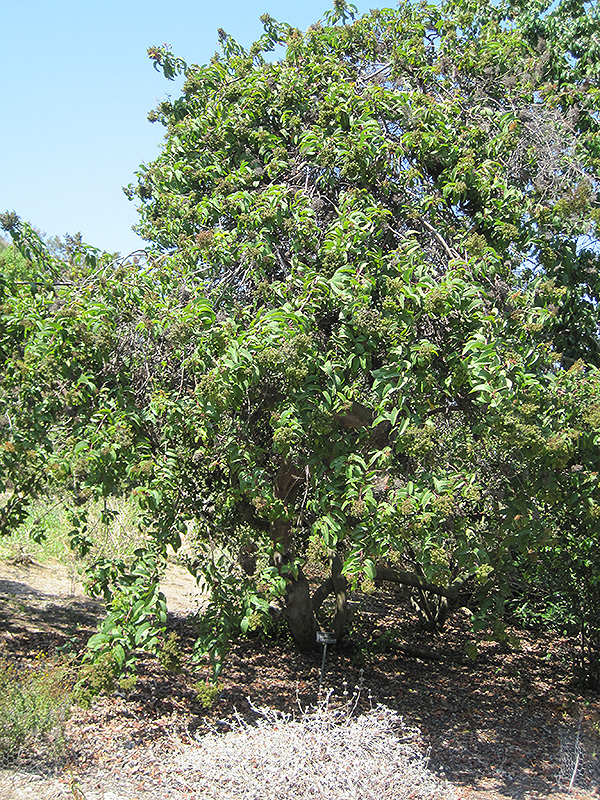Height: 15 feet Spread: 20 feet
Sunlight:
Hardiness Zone: 10a Other Names: Taco Plant, Lentisco, syn. Rhus laurina Description: A large, rounded, evergreen coastal shrub or small tree with fragrant, lance shaped green leaves all year; large clusters of fragrant cream flowers in late spring to early summer, followed by red drupes; not frost tolerant Ornamental Features Laurel Sumac features showy clusters of fragrant creamy white star-shaped flowers at the ends of the branches from late spring to mid summer. It has attractive green foliage with pointy red spines which emerges red in spring. The fragrant pointy leaves are highly ornamental and remain green throughout the winter. The fruits are showy red drupes carried in abundance from late summer to early fall. The smooth brown bark and brick red branches are extremely showy and add significant winter interest. Landscape Attributes Laurel Sumac is a dense multi-stemmed evergreen shrub with an upright spreading habit of growth. Its average texture blends into the landscape, but can be balanced by one or two finer or coarser trees or shrubs for an effective composition. This is a relatively low maintenance shrub, and should only be pruned after flowering to avoid removing any of the current season's flowers. It is a good choice for attracting birds, bees and butterflies to your yard. Gardeners should be aware of the following characteristic(s) that may warrant special consideration; Laurel Sumac is recommended for the following landscape applications; Planting & Growing Laurel Sumac will grow to be about 15 feet tall at maturity, with a spread of 20 feet. It has a low canopy with a typical clearance of 1 foot from the ground, and is suitable for planting under power lines. It grows at a fast rate, and under ideal conditions can be expected to live for approximately 30 years. This shrub should only be grown in full sunlight. It is very adaptable to both dry and moist growing conditions, but will not tolerate any standing water. It is considered to be drought-tolerant, and thus makes an ideal choice for xeriscaping or the moisture-conserving landscape. It is not particular as to soil type or pH, and is able to handle environmental salt. It is somewhat tolerant of urban pollution. This species is native to parts of North America..![]()
![]()
![]()
![]()
![]()
![]()
![]()
![]()
![]()
![]()
![]()
![]()
![]()
![]()
top of page
Louie's Nursery Menifee - Plant Finder
Characteristics
Applications
Features & Attributes
This tool is an online resource representing many of the varieties that we carry over the course of the season, and is intended for informational purposes only. Inventory varies seasonally, so we cannot guarantee that every plant will be in stock at all times - please contact the store directly for current availability. It does not include our entire selection of plants, so be sure to visit our store to see varieties that may not be represented on this list.
bottom of page
